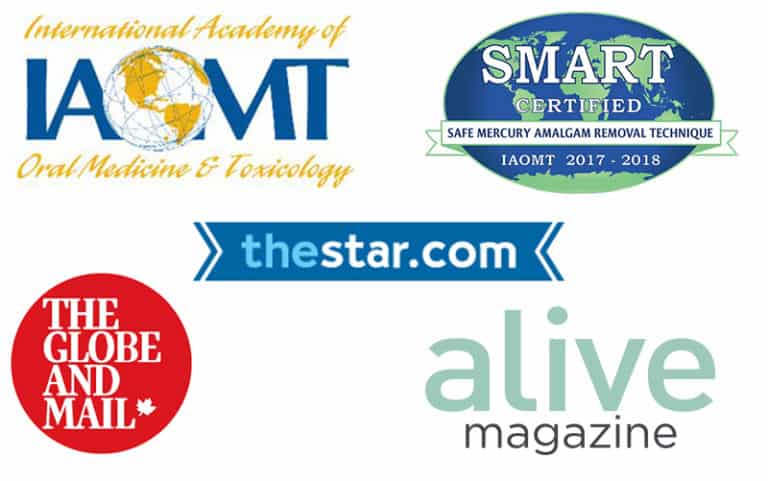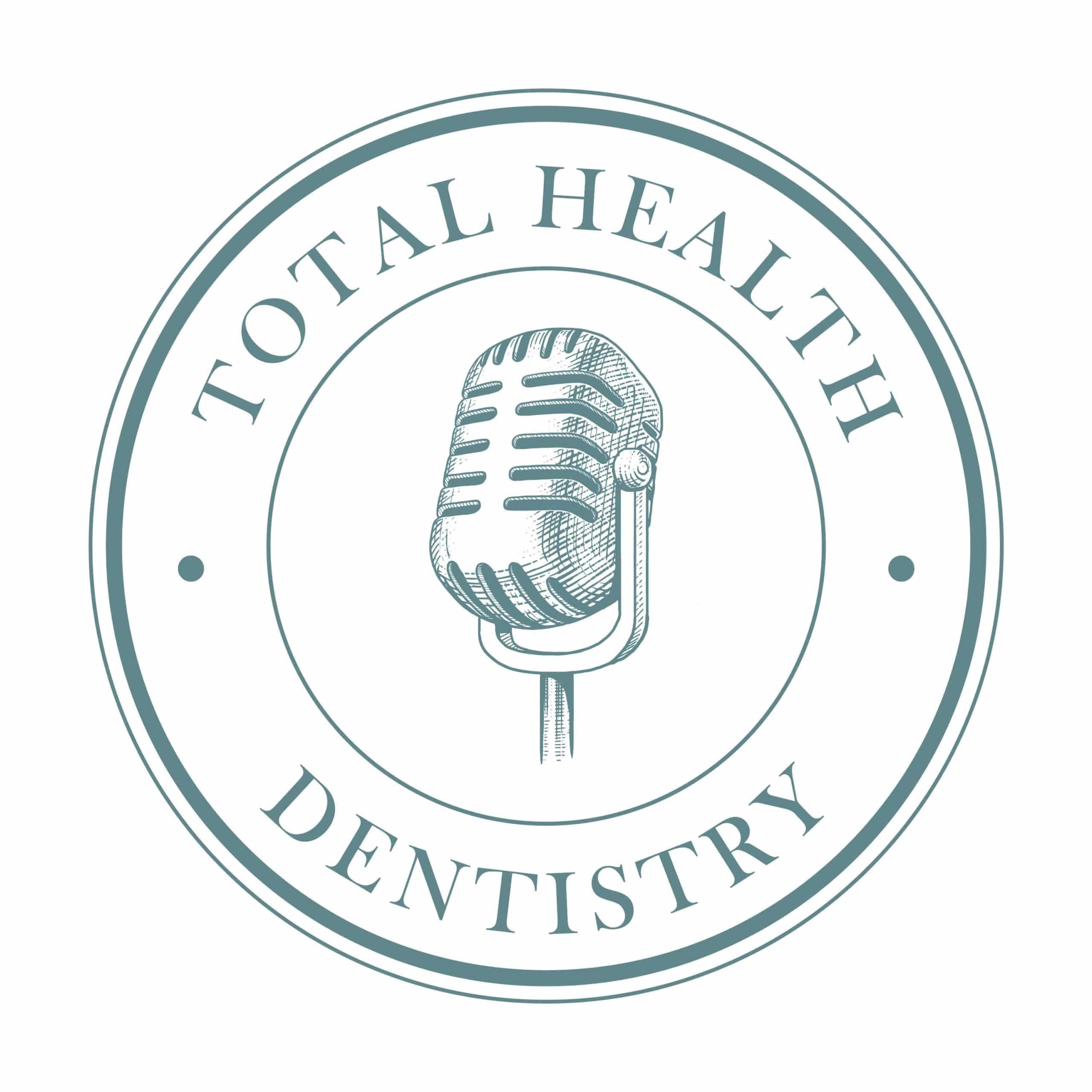
Mid-Life Years - Part 1
Ep. 12 : Total Health Dentistry with Dr. Ali
Listen:
Dr. Ali
- Featured in publications such as Alive Magazine, The Globe and Mail, and The Toronto Star
- Sought by hundreds of Naturopathic Doctors across Ontario
- Planning guest lectures on his approach to Total Health Dentistry along with world-renowned Dr. Thomas Rau MD.

Reviews for Dr. Ali








Your Mid-Life Years
Are you dealing with issues like amalgam fillings, root canals, missing teeth, missing bone, missing gums or a bad bite? Listen in to discover the solutions you’ll want to know about.
Listen:
Read:
Click here for full Transcript
Intro:
In the first of its kind dentists-to-patient podcast, you’ll gain incredibly valuable insight into the mouth-body connection. You won’t hear any fluffy filler here. You’ll actually be able to connect the dots. Join us for a worthy jolt of insight on the Total Health Dentistry podcast with Dr. Ali.
Dr. Ali:
Hey everyone, it’s Dr. Ali. In this episode, you’ll gain a worthy jolt of insight about total health dentistry for the midlife years. In the last episode, we focused on total health dentistry for young adulthood. If you’ve missed the opening five-part series, which laid out the framework for what constitutes total health dentistry, make sure you go back and check out the first five episodes, as it will give this episode and future ones greater context. So in the last episode, we discussed the three key factors behind a vibrant, healthy smile, and we discussed early alarm bells for things that may be going wrong in the young adult years that can and should be addressed. The midlife years are so extensive, we have to cover it actually in the next three episodes. So in part one, episode 12, we’re going to discuss the wars of dentistry, namely amalgams, root canals, missing teeth, missing bone, bad bites.
In part two, episode 13, we will look at solutions and repairing the damage from the wars, and part three, episode 14, we’ll look at more solutions and nonsurgical facelift, facial cosmetics and airway enhancement for the midlife years.
By way of background, in 2007 I opened up Canada’s first published eco-friendly dental office. The practice was focused on providing a wellness model, which was considered a bit out of left field at that time. There was a family practice. Four years after opening the practice, I was really inundated with the vast and significant needs of my adult patients, so say ages 45 and up. Many of them had many teeth that were more filling than tooth. The fillings were mostly amalgam mercury fillings. Many had root canals that were bothering them in one way or another. They had missing teeth, missing jawbone, gum recession, and bad bites and bad airways. They had been through what I started calling the wars of dentistry. Rather than getting overwhelmed, I dug my heels in and put myself through a lot of punishment and as much top-level dental from the masters of dentistry as I could, and none of them as great as the late Dr. Carl Misch, the world’s foremost dental implantologist.
I knew there were solutions and my patients deserved to know about them and to get that type of care right here and not to have to travel to far off places. So my challenge to myself was clear, be able to fix anything to do with teeth, gums, bones, smile and jaw alignment, and to do it in a way that addressed the underlying causes. So once we fixed the problems, my patients wouldn’t continue to be chronic dental patients. I wanted to avoid these patients to be chronic dental patients because that’s what they had been most of their lives. So even though in the previous episodes I’ve been spending a lot of time on the dental needs of babies and children and teens, from 2011 to 2019 I’ve been doing nothing but complex adult dentistry. Quite simply, what I am most comfortable doing in dentistry is addressing the demanding dental needs of adults in the mid-years of life. If this is your age category and you have been through the wars of dentistry and would like some help, hang in there, I’ve got the solutions you’ll want to hear about.
So if you’re in your midlife years, dentistry did the best it could for you with the tools and the technology it had 20 to 40 years ago. Certainly some of it worked well, while a lot of it left much to be desired. Even though the term wars has a very negative connotation, I want to assure you that peace is here and we have more great options to address these past issues than ever before. So let’s start with mercury amalgam fillings. Without a doubt, the most controversial topic in dentistry in the last 40 years has been the use of mercury and the most commonly used dental filling that we have is called amalgam. Amalgam consists of 50% mercury.
Matt: Wow.
Dr. Ali:
35% silver, and the rest is tin, copper, and zinc. While I understand why dentistry accepted the use of mercury in the amalgam, say before 1980, there was a reason for that. We just didn’t have really any good alternatives or very few. In recent years, and certainly today we have very superior materials to fill teeth that do not contain mercury.
Now this mercury isn’t sealed in at all. I’m kind of going through and busting some myths here. Patients always ask me, “Are my fillings leaking?” By that they mean, are they leaking mercury?
Matt: Yeah.
Dr. Ali:
I can quote the study. It was Gray et al in 1981 that first showed that mercury leaks out of fillings above 14 degrees Celsius.
Matt: Whoa.
Dr. Ali:
So Matt, guess when in the mouth it’s more than 14 degrees in our mouth?
Matt: All the time.
Dr. Ali:
Correct. That’s right. 24/7, right? It’s always warmer than 14 degrees in our mouth unless you just smash down ice cream and then it’s temporarily not 14. Soon after that it’ll be 14 so mercury is leaking 24/7 from the day that mercury fillings put in till the day it’s no longer there.
Matt: Wow.
Dr. Ali:
Now, right after I shared this with folks, kind of like what you’re reacting, I’m obliged to say to them, don’t panic.
Don’t run out and just have your fillings drilled out. Do not do that. Don’t panic. This is not the intention of this in any way, shape, or form. We’re discussing this to gain greater awareness, greater context, and lots of informed decision making has to be made after information is gathered. So, I just want to share that drilling the mercury amalgam filling, that causes all the mercury to be released in minutes, right? So you’ve got a filling in there. Once you drill it all out, all of that mercury is being released in minutes. The patient, the dentist, dental assistant, all are breathing that in and they’re absorbing a good 80% of that mercury vapor. Now mercury vapor, which is what we need to avoid the most. That’s what we need to avoid the most.
That vapor passes right through the rubber dam. So there’s a big myth out there that if you just put a rubber dam on, you’re totally containing the vapor and it’s completely protecting you and so on. It isn’t, the vapor simply does pass through it. If you want to have your mercury fillings removed though, using strict protocols to drastically reduce your mercury exposure, you have some options. One of them is to go to the IAOMT.org. IAOMT.org. This is not the only place, but it’s one of the key organizations that had done actually a ton of research on mercury in dentistry and it was actually started by a Canadian. So a shout out to Dr. Murray Vimy from Calgary.
Matt: Right on.
Dr. Ali:
Now personally, I’m accredited with this organization since 2005 and I’ve been using their strict protocols for removing amalgams from my patients for many years now. Of course, all of this whole process starts with a proper informed consent process, something I take very, very seriously and we’ll have future episodes on informed consent and how to achieve that and how to get that as a patient. In February, 2008, I published an article for Alive Magazine. Do you know Alive Magazine?
Matt: Yep, yep.
Dr. Ali:
Canada’s foremost wellness magazine. So I published an article in Alive in February, 2008 on mercury silver fillings, trying to get the facts versus the fiction of this for the Canadian public. We can replace mercury amalgam with BPA free plastic fillings, porcelain and gold. Each has their strengths and during an informed decision consultation we can figure out what is the best replacement option.
Matt: Nice.
Dr. Ali:
Now often my patients will work hand in hand with another healthcare professional, usually a naturopathic doctor, a functional medicine practitioner, family physician, many other very talented and caring individuals. In 2008, I did a series of lectures for the Ontario Association of Naturopathic Doctors on the team concept of treating our patients. So that’s what I’m talking about, treating our patients as a team.
Since then, since 2008, I’ve worked with hundreds of naturopathic doctors all over Ontario and we’ve co-treated at least thousands of patients with great results. So I’m a big fan of treating our patients with a team concept. In future episodes, we’ll have a number of these practitioners on the podcast to pick their brains on a whole host of wonderful, wonderful issues. So make sure you tune back for those. Now, mercury aside, these mercury amalgam fillings, they often crack teeth.
Matt: Wow.
Dr. Ali:
They act like a large metal post wedged inside of a two by four piece of wood, which is the tooth in this analogy. So the filling is the wedge and the two by four is our tooth, and what do we do? Well, we just keep hammering and biting on the metal wedge, right? Eventually, crack. This is such a common problem that I’ll venture to say that if you’re in your middle midlife years, there’s a 90% chance you’ve lost at least one tooth or at least part of a tooth because of a crack caused by a mercury amalgam filling, period. 90% I’ll venture to say. It’s huge. Now, one quick note, I’ve heard many of my colleagues say that they must use amalgam in certain situations where there is too much saliva or bleeding, et cetera. You see, the alternative fillings that we use like different white fillings, they require a dry environment. You can’t have saliva and blood and just has to be really, really dry. Whereas amalgam fillings you can get away with a little bit more moisture, a little bit less ideal situation.
Some colleagues will say, well, we’ve got to use amalgam in these really compromised situations. I haven’t filled a single tooth with amalgam since 2004. 15 years. Well, you might say, well, how’s that possible?
I’ve certainly encountered compromising situations, I guarantee you. So what do I do? Oh, I simply modify the situation to make it less challenging, doing gum trimming, a temporary filling, some other option to change the equation so that we can get good isolation and then we are able to not have to use amalgam because it’s wet.
Okay, switching gears to root canals, another common dental procedure you’ve likely had or may have had in your middle ages of life is a root canal. In my adult practice, I see probably 40% of my patients have had at least one root canal from years coming before to see me. So before they came to see me. A root canal is a procedure where we clean out the infection of the main canals of the root. We’ve become actually very, very good at cleaning up the main canals of roots and disinfecting them. We’re able to get the majority of the infection out of a tooth when we do a root canal. It’s very, very predictable. The issue we face in dentistry is that we cannot get rid of all of the infection out of the tooth. There are tiny, what I’ll call, mini side roots that branch off the main roots.
So think of a tree. If the infection were inside the tree trunk, and inside all the branches and all the side shoots, in dentistry, we’re able to clean out the infection in the main trunk. But we have a very difficult time, if not impossible, to get the infection out that went into the branches and went into the side shoots off the branches.
Matt:
Now when you’re looking at, say you’re looking at a root canal or a tooth root in an x-ray, can you see those branches when you look at the x-ray?
Dr. Ali:
Absolutely not. Those branches are so, so minuscule, but there are so many of them, right? Multi-multi millions and millions and millions of them that it’s not something we can easily overlook. So we can’t see them on the x-ray, these side channels. It’s not like a tree where you can see the trunk and then you can see all these off branches.
Matt: Exactly, yeah.
Dr. Ali:
But those off branches are embedded within the root of the teeth. Teeth are actually porous. Another good analogy is think about a dish sponge. A tooth is porous, like a dish sponge. So if infection had gone into the heart of the sponge, you can get the heart of the infection out, but it would kind of diffuse into the spongy parts of the whole sponge. So that’s a little bit of how anatomy of a root is. So good question Matt, do you have a root canal by the way?
Matt: I’ve had a couple of root canals.
Dr. Ali: A couple of root canals. Okay, interesting.
Matt: That’s why I ask. I’ve seen it before.
Dr. Ali:
Interesting. We’re not talking about one or two branches. There are literally millions and millions of these side branches. Again, the infection is in them too, but we can’t get them well cleaned out, nor can we get them filled afterwards very well. So for folks with a good immune system, usually they do fine and they can keep the low grade infection under control simply with their immune system like yourself. However, if the remaining infection happens to consist of very aggressive bugs or if the person’s immune system isn’t rock solid, then they can have various degrees of issues, ranging from out-and-out pain or vague tenderness or pockets of infection in the bone that never really get better. So each root canal in each patient has to be assessed. There are no blanket rules. I look at my patient as an individual, assess them on all fronts, and assess their root canals from those lenses.
So as I said, as a dentist, my role is to do my best to make sure my patient has made an informed consent. The patient has an unequivocal right to choose what they do or do not want in their body. So long as I’ve determined that they have fulfilled the five part nature of informed consent, then the patient has full autonomy to keep their root canal, pull their root canal, whatever they decide to do, they have that autonomy to do so, if I have fulfilled my job, the five-part process of informed consent. This autonomy is an inherent patient right, and it’s carried with every patient regardless of where in the world you’re listening to this, you have this autonomy.
We will have future episodes on autonomy and informed consent and it’s actually an area I’ve studied extensively and take very seriously.
All right, so let’s look at missing teeth. Let’s say you were 25 and when you had a bad toothache, you couldn’t afford a root canal and a crown and bam, the tooth had to be pulled. This is a very, very common situation. So for the past 25 years, let’s say you’ve been missing a molar and you didn’t have it replaced. Very likely the tooth behind that missing tooth has tipped over and like a fallen tree in the woods, it’s tipped. This has caused the above tooth to grow longer, and caused some actual compression of your jaw joint.
Matt: Wow.
Dr. Ali:
We’ll come back to that. It maybe has caused gum problems around that tipped tooth. It’s a little bit like in the woods. When a tooth falls over, all the little animals and stuff start to nest around it. Provides a nice little nest.
The other thing that has happened when you’ve lost your job bone, when you’ve lost a missing tooth, excuse me, is that you’ve lost jawbone around that missing tooth. I’m still amazed how few people who’ve lost a tooth had been told or are aware that they will lose jawbone around that missing tooth. It’s very rare that people are aware of this just in my history of asking patients. So if you have a missing tooth and didn’t know you were losing bone around that tooth, please let us know. Leave us a comment in the comments section or on our website, interact with us and let us know whether you were not aware. I’d love to get more data and to see how many people actually were aware of bone loss, jawbone loss when they were missing a tooth.
So, Total Health Dentistry listeners, if you’re missing a tooth, let’s do this little exercise. You’re not missing a tooth Matt, so you can’t quite do this, but run your index finger along the gum line just in front and just behind your gums where you’re missing a tooth. So run your index finger along the gum line just in front and just behind the gums, where you’re missing a tooth. If you traced your gumline over the area where your tooth is missing, you should have felt the dip. So let’s say you’re missing the lower right molar. The second one from the back, second one from the back. Behind the gap, you have a tooth, you should feel no dip. All the gum, all the bone.
That’s the last tooth in the mouth. The one next to it is where you’re missing a tooth. If you run your finger in there, you should feel somewhat of a dip where you’ve lost bone, you’ve lost gum, you’ve lost bone. Then as you come towards the front of the mouth, you have a tooth there again and then you should feel your finger. Trace your finger along the gum line and should feel your bone built out again because you have a tooth, so it’s like a valley, right where you’re missing that one tooth. That’s just a little exercise for yourself to kind of track the amount of bone that you may have lost.
Okay, so broken fillings, missing the teeth, tipped teeth, lost jawbone, all of this gradually leads to two things, bad bites and facial changes. If you’ve got a bad bite, okay, you’ve got a bad bite if you don’t know where your good or comfortable bite is anymore. You do, Matt, we already did that exercise and you’re good, but if you feel more comfortable biting on your front teeth and not on your back teeth, you might have a sore jaw, sore or tired muscles.
You might be breaking your teeth fillings on a somewhat regular basis. These are some signs that you might have a bad bite. I’ve been fixing these issues for my patients on a dedicated basis since 2011. I can often predict what I’m going to see inside my patient’s mouth before ever looking in their mouth. I can tell from their jawline, their facial proportions, and so I’ll end part one of episode 11 with this intro to how dentistry can affect our face. Front teeth Matt, our front teeth, they support the lip. The back teeth, they support the face. Back teeth are the pillars. When we lose or break these teeth and our teeth start tipping over, we’re losing the support beams.
Matt: Whoa.
Dr. Ali:
For our facial architecture. Can you kind of picture that?
Matt: Yeah, yeah, yeah.
Dr. Ali:
The back teeth are like these pillars. If we don’t have them or if they’ve tipped over, our beams are gone, our support beams, our beams are tipped over or collapsing. So in part two, we will discuss all the good news that there is in this, the wonderful solutions that we actually have available to us today. Please join us.
Legal:
Please note that Dr. Ali Farahani is a general dentist and that Total Health Dentistry is not a specialty of dentistry. While we make every effort to broadcast correct information, dentistry is a constantly changing science and art. One doctor may have a different way of doing things from another. Dr. Ali Farahani is simply presenting his views and opinions that will be as evidenced based as possible. We welcome any comments, suggestions, or corrections of error.
Dr. Ali Farahani takes no money from drug or device companies. By listening to this podcast or reading this blog you agree not to use this podcast or blog as medical advice to treat any medical condition in either yourself or others, including, but not limited to patients that you are treating. Consult your own physician for any medical issues that you may be having. This entire disclaimer also applies to any guests or contributors to the podcast or blog. Under no circumstances shall Sante Family Dental, Dr. A. Farahani Dentistry Professional Corporation or Dr. Ali Farahani, or any of their employees, associates, or affiliates, any of the guests or contributors to the podcast or blog, be responsible for damages arising from use of this podcast or blog.
Young Adult
Midlife – part 2
Reviews of Podcast





Subscribe to the Total Health Dentistry Podcast:
Or subscribe with your favorite app by using:
https://santefamilydental.ca/feed/podcast/
Podcast: Play in new window | Download | Embed














